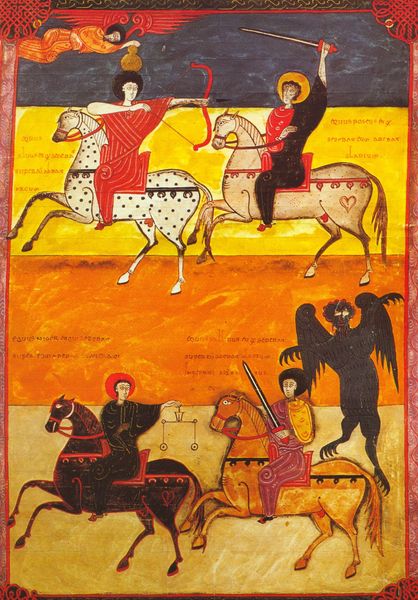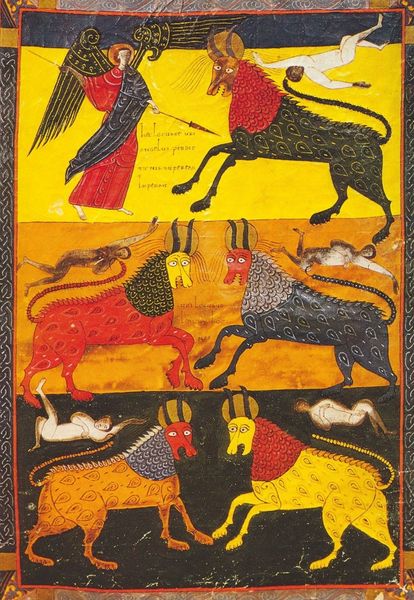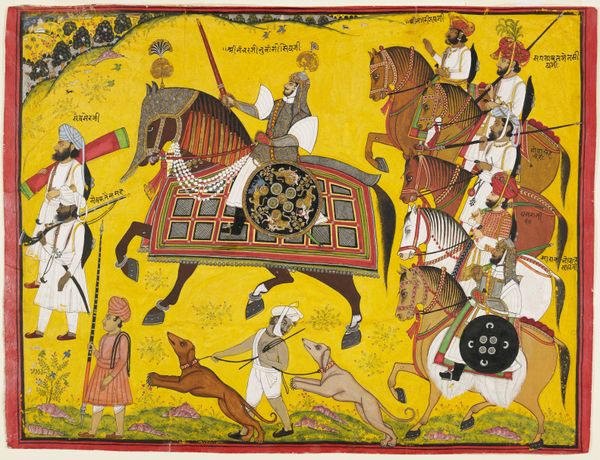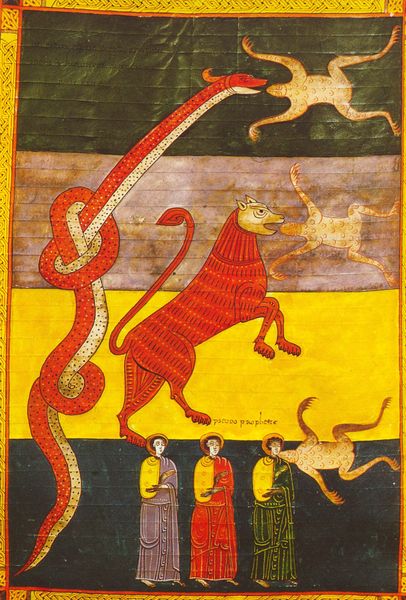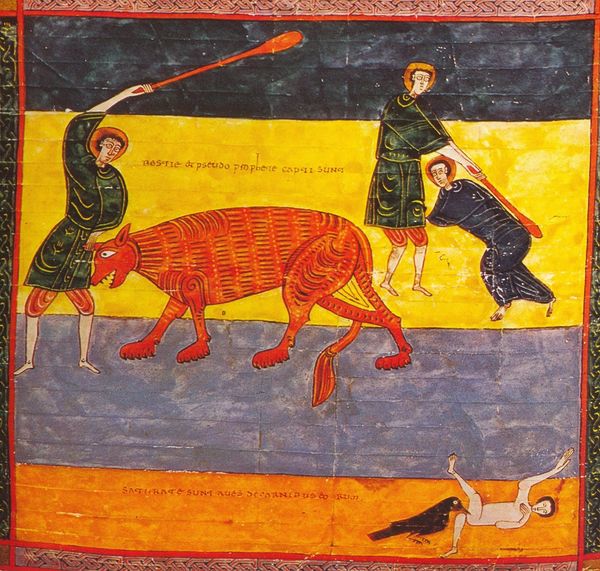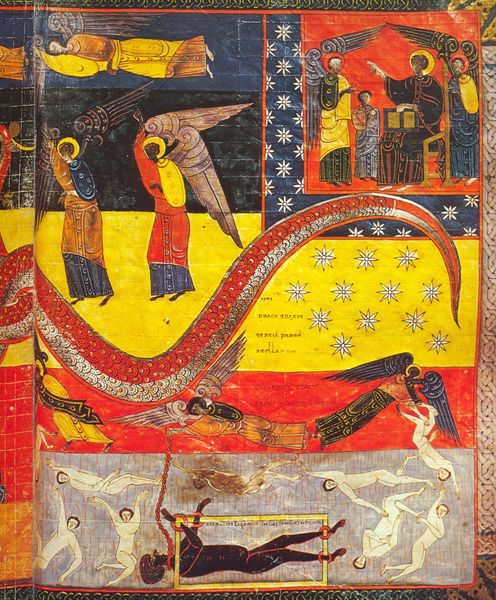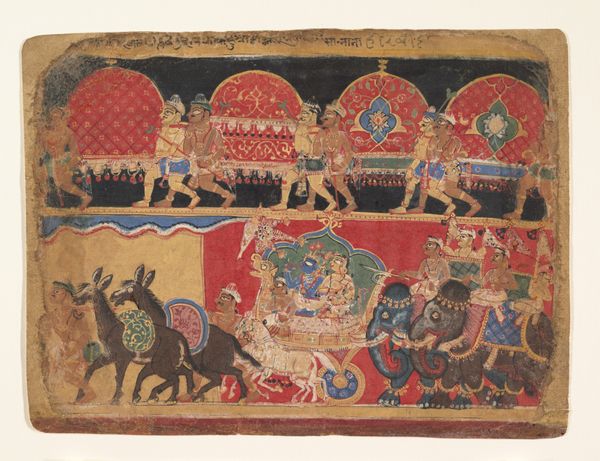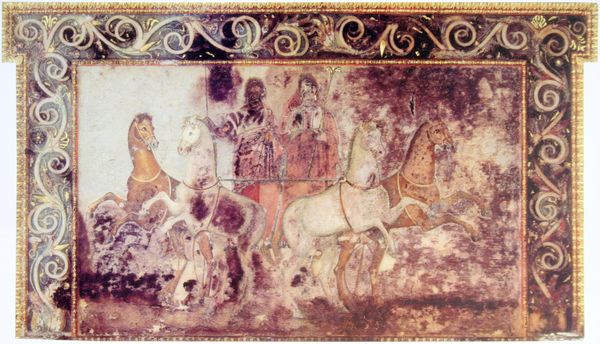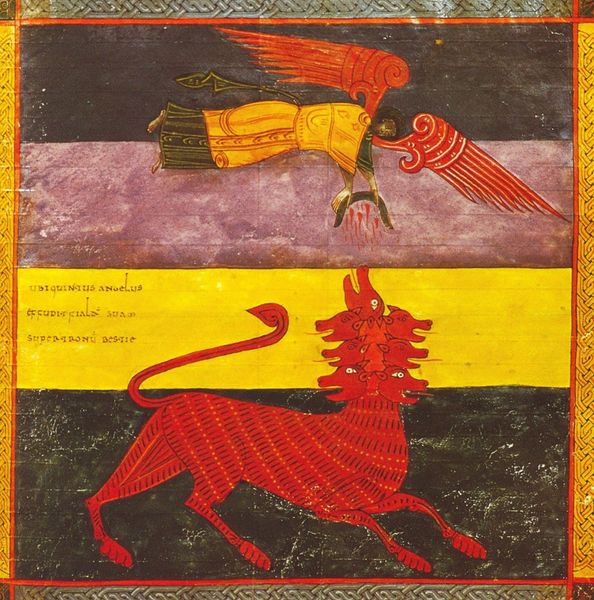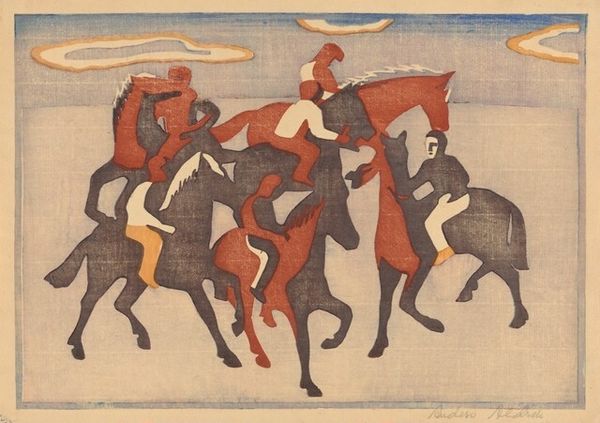
tempera, painting
#
byzantine-art
#
medieval
#
narrative-art
#
tempera
#
painting
#
figuration
Copyright: Public domain
Around 1050, Facundus painted "The Sixth Trumpet. The Myriads of Horsemen Killing Men," inspired by the Book of Revelation. The composition is divided into three horizontal registers in orange, black and red. The eye is drawn into the upper section with its four stylized horses and riders. Facundus organizes these elements into a series of structured layers. The riders are geometric, with sharp lines defining their simple shapes and the horses are presented in bold colors and decorated with repetitive patterns. Below, the bodies of the fallen are rendered in pale flesh tones, stark against the dark background. The artist contrasts the rigidity and order of the riders with the chaos and disorder of the dead, emphasizing the devastating power of the apocalyptic event. Through this calculated arrangement, Facundus explores themes of divine judgment and human mortality. The painting’s visual structure, with its emphasis on contrasting forms, serves not only to depict a biblical scene but also to engage with deeper theological and philosophical questions about the nature of good and evil, order and chaos. By interpreting and re-interpreting, the work invites us to consider the meaning of the apocalypse in our own time.
Comments
No comments
Be the first to comment and join the conversation on the ultimate creative platform.
